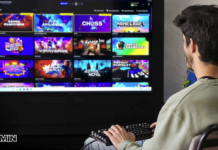By Ran Avidan, Co-Founder & CTO at StartApp
Blockchain is still the word on everybody’s lips. Ever since Bitcoin came into the greater public consciousness, companies have been trying to capitalize on the technology that makes it possible. Everyone wants a piece of blockchain, but few appreciate or understand the true potential of the groundbreaking technology. Which, in turn, is holding blockchain back from true mass adoption. In today’s increasingly mobile-first world, the quickest way to critical mass will be through mobile adoption of the blockchain, especially in emerging markets. India – which, according to an internal study, currently represents the largest portion of mobile crypto users in the world (21%) – is only second to China in regards to mobile users globally and could end up leading that charge.
Building on E.M. Rodgers’ original innovation theory, Geoffrey Moore and Malcolm Gladwell pointed to a segment of the adoption lifecycle from 15 to 20 percent as “the chasm” and “the tipping point,” respectively. This portion of the adoption lifecycle is crucial for new technologies and products as it is the point of adoption before a technology enters the general population. The introduction of blockchain through mobile should provide the means to fast-track the proverbial jump over “the chasm.” The overall appeal of blockchain stems from the various applications of the technology – many of which lend themselves to mobile integration. Blockchain is not limited to cryptocurrencies or even to fintech – many industries and processes can benefit from the benefits of blockchain technology.
Trust remains one of the most desirable traits in both humans and businesses. Blockchain’s inherent trust, rooted in the design of the technology, is a factor that remains one of the biggest draws to the emerging technology. The decentralized nature of blockchain is another desirable feature for both businesses and individuals. With the seemingly yearly increase in cybercrime, a decentralized ledger for personal records and financial transactions provides an extra layer of security for all parties involved.
Smart contracts are another reason so many businesses have become interested in the power of blockchain, although not everyone knows how to write up, or even execute the contract on the new technology. Smart contracts are unchangeable, self-executing contracts that are shared through the decentralized network and provide a “trail of breadcrumbs” of sorts for the parties involved.
Peer-to-peer (P2P) communications and transactions are both an example of real-life applications of blockchain technologies. We have already seen the rise in encrypted messaging services like Signal and Telegram, which points to the desire for more privacy and decentralization in our day-to-day communications. P2P payments is another area that has its safety concerns. Using smart contracts, and making payments through blockchain, provides an unchangeable and permanent record that would, in principle, make these scams far greater to commit.
An “outside the box” application for blockchain is voting. If we had blockchain for the 2000 election would Al Gore have won? Would we even know what a hanging chad was? If blockchain was utilized for the purposes of voting, recounts, voter fraud and the infamous hanging chads would be a thing of the past. Blockchain can also be implemented to help protect our personal records, including healthcare and social security information.
Although there is still much skepticism around widespread adaptation of cryptocurrency – education is key, and we have yet to see the true power and breadth of blockchain. Through mobile integration and applications in a multitude of sectors, blockchain is poised to cross “the chasm,” and showcase the true staying power of the technology. With the potential to be ubiquitous as the internet, blockchain is only scratching the surface.
















